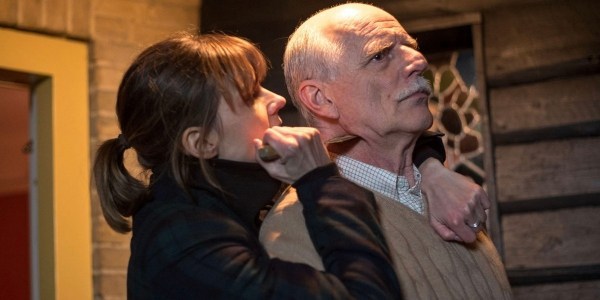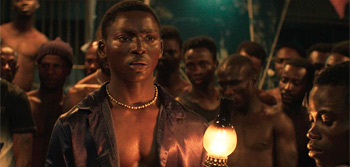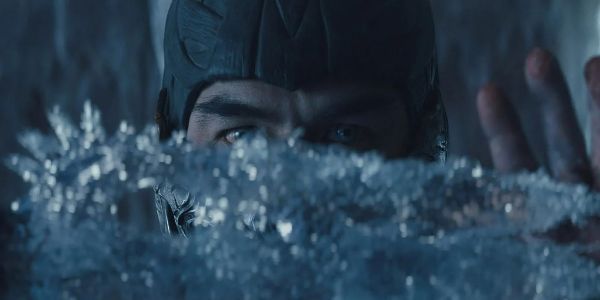Someone Should Jump on a ‘Usagi Yojimbo’ Adaptation
Welcome to Pitch Meeting, a monthly column in which we suggest an IP ripe for adaptation, then assign the cast and crew of our dreams.
Funny animal comics are a staple. Everyone loves a good Donald Duck or Bloom County. No matter how wretched Garfield’s behavior accelerates, his adorable whiskers spark forgiveness for his misanthropic hijinks. Who hasn’t sacrificed common sense and decency for a comforting dish of lasagna?
Now, let’s remove the comedy. Slapping a hard stare on the brow of a cute little furry mug is my jam. Take your Ranger Rick, give me Rocket Raccoon. Deep down, we know our pets to be the smarter organisms, observing our fruitless grasp at the good life, loving us when we inevitably swing for a whiff. These savage critters are an invitation to look inward, contemplate the paths we’ve taken as a species, and consider course correction.
Usagi Yojimbo is a celebration of humanity explored through a delightfully peculiar vision. Cartoonist Stan Sakai initially intended to tell the saga of a ronin (masterless samurai) modeled after the 17th-century swordsman philosopher Miyamoto Musashi minus the anthropomorphism. He yearned to combine his love and obsessively well-researched knowledge of Japanese history, culture, and mythology with his passion for Akira Kurosawa, and transplant it into a sweeping epic of infinite possibilities.
Then, while doodling, Sakai sketched a rabbit with his ears tied together to reflect a top knot. Once seen, it could not be unseen. The rabbit bodyguard was born.
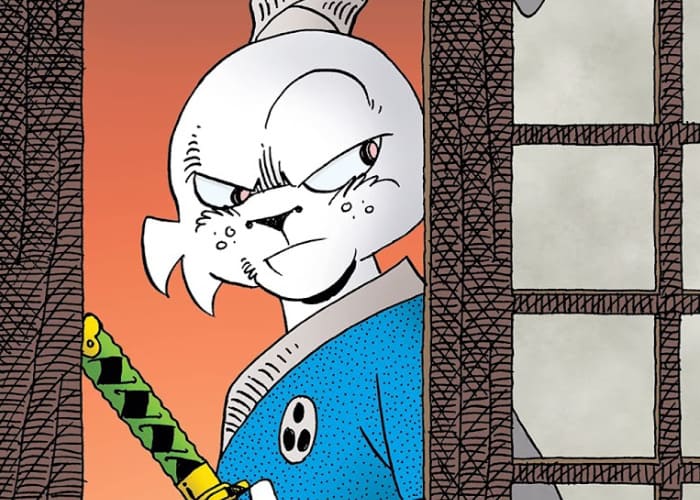
Usagi Yojimbo made his first appearance in the Albedo Anthropomorphics anthology in 1984, eventually finding a temporary home and solo title with Fantagraphics publishing. The initial run of books was mostly constructed as one-and-done adventures. Think of them in terms of X-Files monster-of-the-week episodes (this Sunday, Mulder battles the Flukeman; next Sunday, Mulder defeats stretchy Mister Tooms).
While Usagi Yojimbo is connected to a time, a place, and a character, the comic is not stuck to a genre. There are many stories of Usagi scrapping with bat-winged ninjas, remorseless bandits, and shameful warriors in hiding. There are as many stories of Usagi confronting demons of the wood, revengeful ghosts, and various Yōkai (monstrous apparitions). Sakai refuses to be confined in any particular narrative, using his wandering samurai as a conduit to a variety of tales, which maintains the freshness of the comic.
Sakai uses his character to ruminate on the past, including its relation to art. Many Usagi Yojimbo stories are designed to highlight the craft of calligraphy, pottery, kite construction, etc. Yes, Sakai adores Kurosawa, and the director is all over Usagi Yojimbo, but so is Lone Wolf and Cub, Godzilla, and the more gloomy work of Kenji Mizoguchi (Ugetsu, Sansho the Bailiff). Frankly, the cultural mash-ups never quit: Sakai recently stole H.G. Wells’ War of the Worlds narrative and dropping it right on top of feudal Japan.
If you have already encountered Usagi Yojimbo, it most likely was through his multiple guest appearances in the Teenage Mutant Ninja Turtles comics, cartoons, and toy lines. Sakai and TMNT creators Peter Laird and Kevin Eastman erupted out of the mid-’80s black and white comic book boom. Usagi is a popular reoccurring character within the TMNT canon, bumping against Leonardo, Donatello, and the rest of the turtles through a variety of time travel and mystical shenanigans.

The closest Usagi Yojimbo ever came to achieving wider, more mainstream success was when Eastman and Laird’s Mirage Studios brought a cartoon to pilot based on the Space Usagi mini-series (featuring a sci-fi descendent of Usagi). Sadly, its life was cut short when the similarily rabbit-fronted science fiction toon Bucky O’Hare and the Toad Wars tanked on TV. You know how suits work, there’s only room for one rabbit-based badass.
Space Usagi is a fun enough divergence from the usual content, but it’s not representative of the Usagi Yojimbo universe. As the popularity of manga and anime has exponentially increased since the ’80s, a proper stab at a cinematic Usagi is due. Considering that Netflix is scooping up all manner of oddball comic book properties (Bone, Sweet Tooth, The Old Guard), Usagi Yojimbo could easily slide into their ravenous slate of programming.
The dream scenario is to follow the Star Wars: The Clone Wars model. Kick off the series with an epic feature-length endeavor before hopping into a multi-season format running about ten episodes in thirty-minute chunks. Yes, animation is the only way to go. As much as I adore the OG Ninja Turtle movies from the ’90s, at this point, a traditional cartoon would be the most welcoming format for characters that need to switch back and forth between genres.
Don Bluth‘s melancholic tone could serve the feature as the launching pad for the greater Usagi Yojimbo saga. Maybe he can take a moment away from his Dragon’s Lair reboot (already at Netflix) to whip up some storyboards, or better yet, how about we just nab Kazuhiro Furuhashi, who directed the unhinged and brutally violent Dororo. No, “unhinged” and “brutally violent” do not match Usagi Yojimbo. However, it is an extremely faithful adaptation of Ozamu Tezuka’s manga and adheres strictly to the history of the Sengoku era.
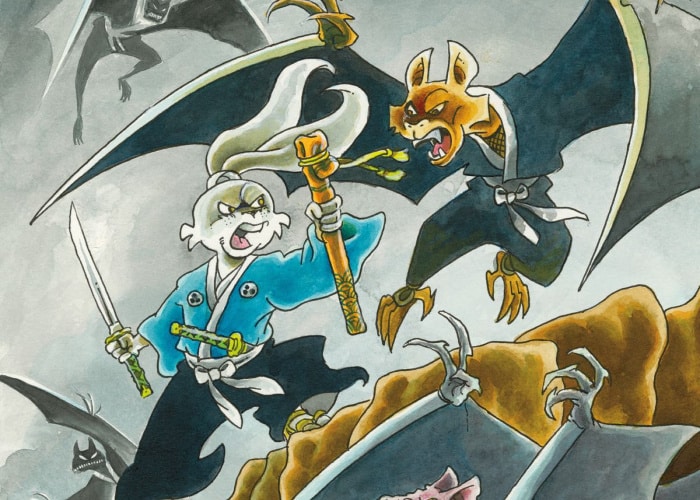
Furuhashi matches the tone of the subject he’s tackling. He would bring life to the rabbit ronin, and a reality to the factual and magical world around him. What Usagi Yojimbo requires is absolute confidence of self. Furuhashi brings that in spades.
The majority joy of Usagi Yojimbo comes from how its many episodic tales stack upon each other, forming a larger, sprawling narrative. However, throughout its thirty-six years of continuity, there have been several novel-length adventures, the most famous of which is “Grasscutter.” This sweeping, sumptuous storyline combines multiple genres, preparing audiences for what to expect further on down the line of the main series.
“Grasscutter” follows the hunt to procure the ancient sword of the gods, the Kusanagi-no-Tsurugi or the Grass-cutting sword. According to legend, when prince Yamato Takeru was trapped in a firey field of grass, the blade gave him command over the winds, and he was able to slash a path through the blaze and into safety. The Grasscutter was lost to the ocean floors after a disastrous naval battle, but it was accidentally uncovered by Usagi hundreds of years later.
Not only does Grasscutter wield mystical abilities, but it grants its user tremendous political power. Usagi cannot let the weapon fall into the hands of a diabolical shogunate (military leader). Partnering with the cantankerous bounty hunter Gen and the righteous priest Sanshobo, Usagi journeys on a mission to hide the sword from the greedy, battling villainy in the form of both animal and demon.
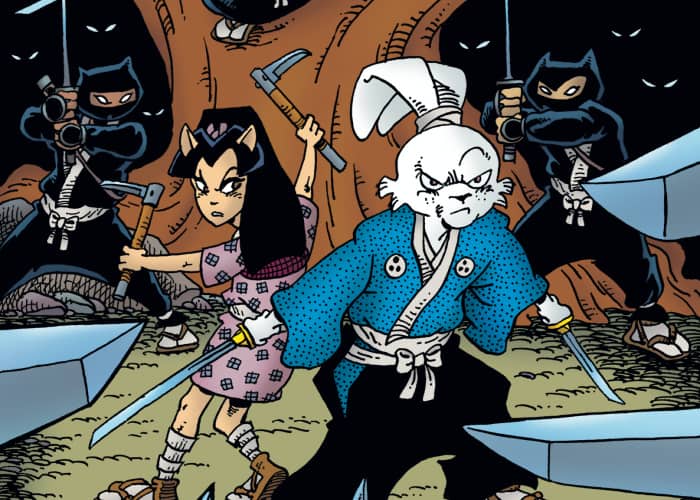
When I read the comics, I hear Toshiro Mifune‘s voice. The actor is Usagi. Usagi is the actor. I don’t want to hear an American voice or the English language coming from Usagi’s mouth. Netflix must continue the war against the 1-inch-tall barrier of subtitles by adamantly embracing them.
So, with no Mifune at our disposal, let’s cast Takuya Kimura as Usagi. When watching Takashi Miike’s ruthless adaptation of Blade of the Immortal a few years back, I was struck by how Kimura balances the manic with the dramatic. Look to Seven Samurai or Yojimbo; Mifune was a master of juggling anxious energy. One second he is cool as a cucumber, the next, he’s crumbling with rage. Kimura, like Mifune, shows no shame when switching badass for goofball, a much-needed characteristic for Usagi.
Stan Sakai has dedicated his life to Usagi Yojimbo. The comic book is bursting with his person with every nook and cranny cemented by his passion. It’s a complete work (well, not yet: Sakai is still cranking out the stories) curated by a lone vision, which offers a meticulously constructed object for a filmmaker or showrunner to consume and redistribute into another medium.
Usagi Yojimbo aches for adaptation. Or, at least, I ache for it to be adapted. The series has skirted on the surface of profound discovery but has not yet bubbled forth into blockbuster tentpole acceptance. That’s ok. The comic doesn’t need us — it’s got a sturdy fanbase — but we need the comic.
Usagi Yojimbo is a helluva gateway drug. From its pages, folks fall into a massive well of entertainment similar to how the latest Quentin Tarantino venture knocks down the door to Roger Corman-land or Steve McQueen-ville. Within Usagi Yojimbo‘s pages is an invitation to Kurosawa, Mizoguchi, Miyamoto Musashi, Sergio Aragonés, and so many more. Slap it on Netflix and we’ll gain a new army of acolytes.
